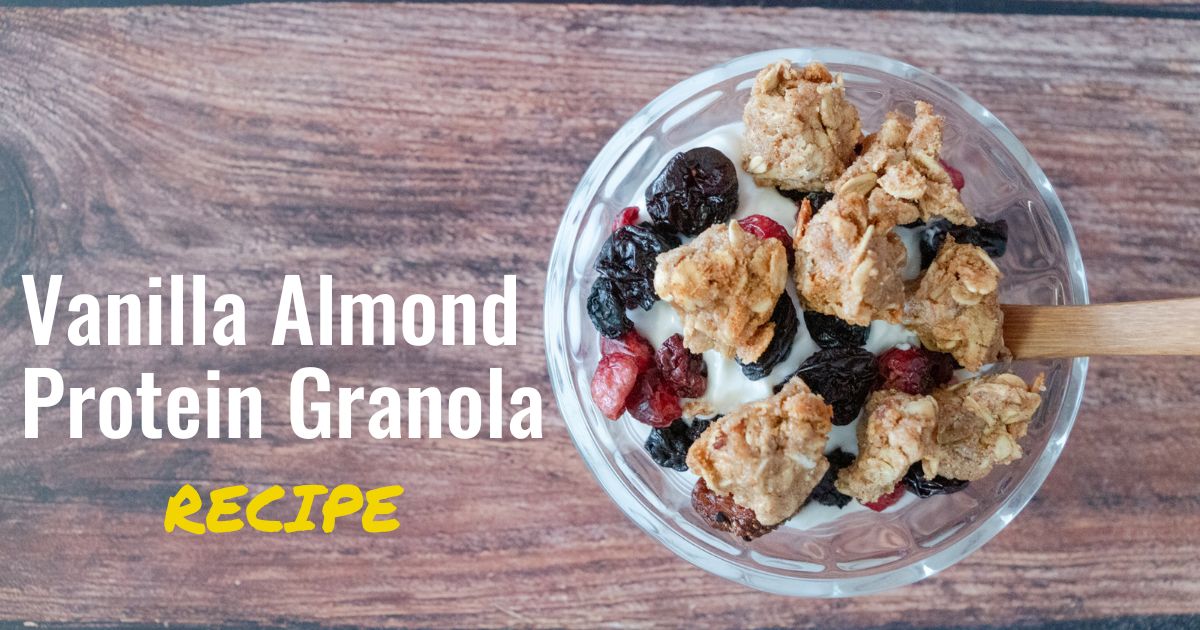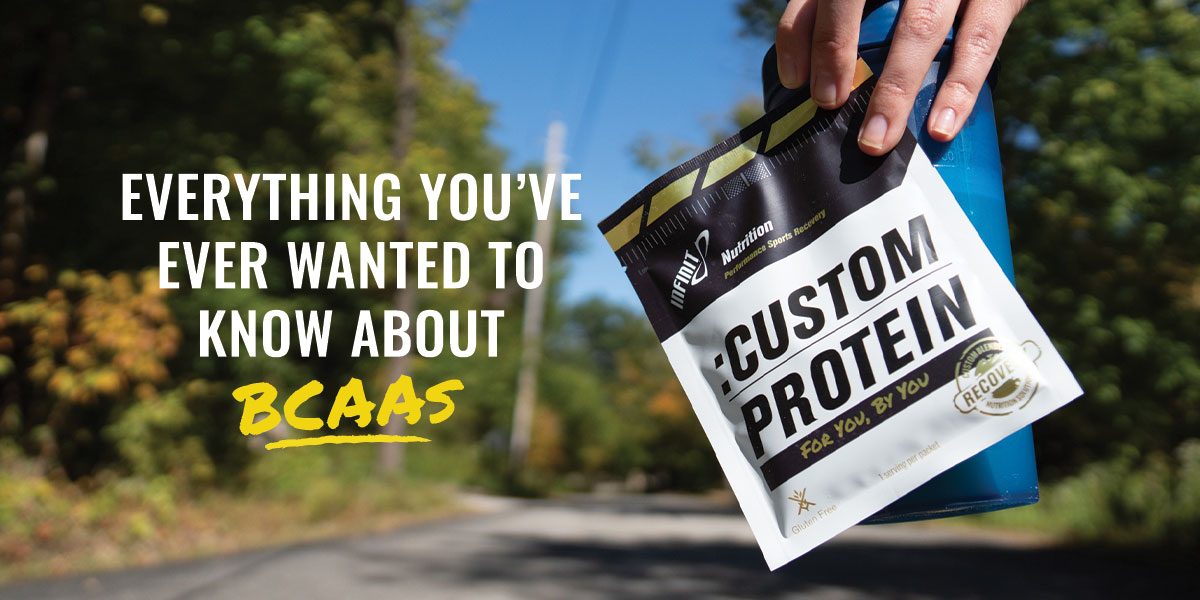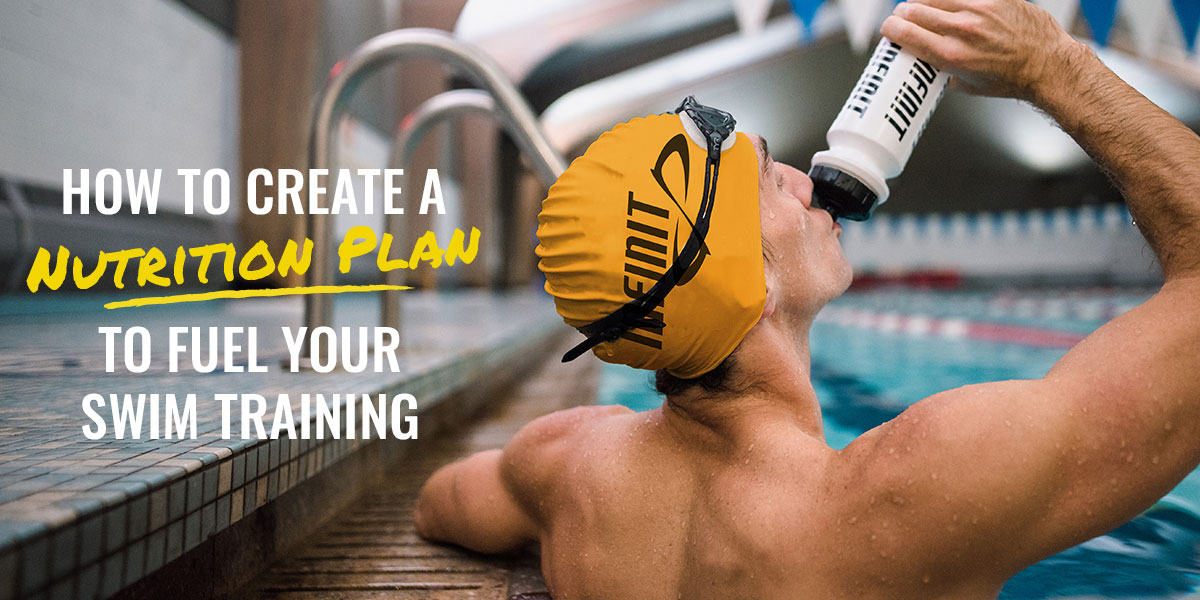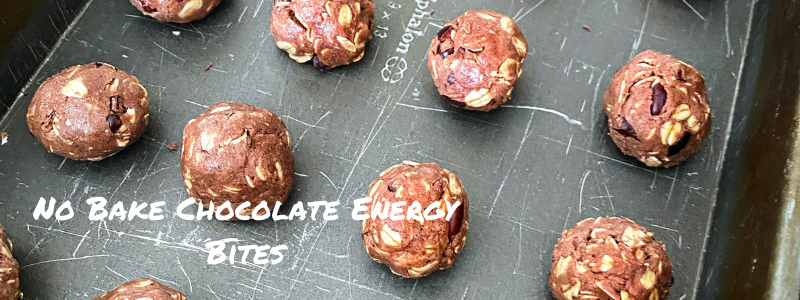5 Things Every (Endurance) Athlete Should Know
- By Colin Riley
- Mar 18, 2024
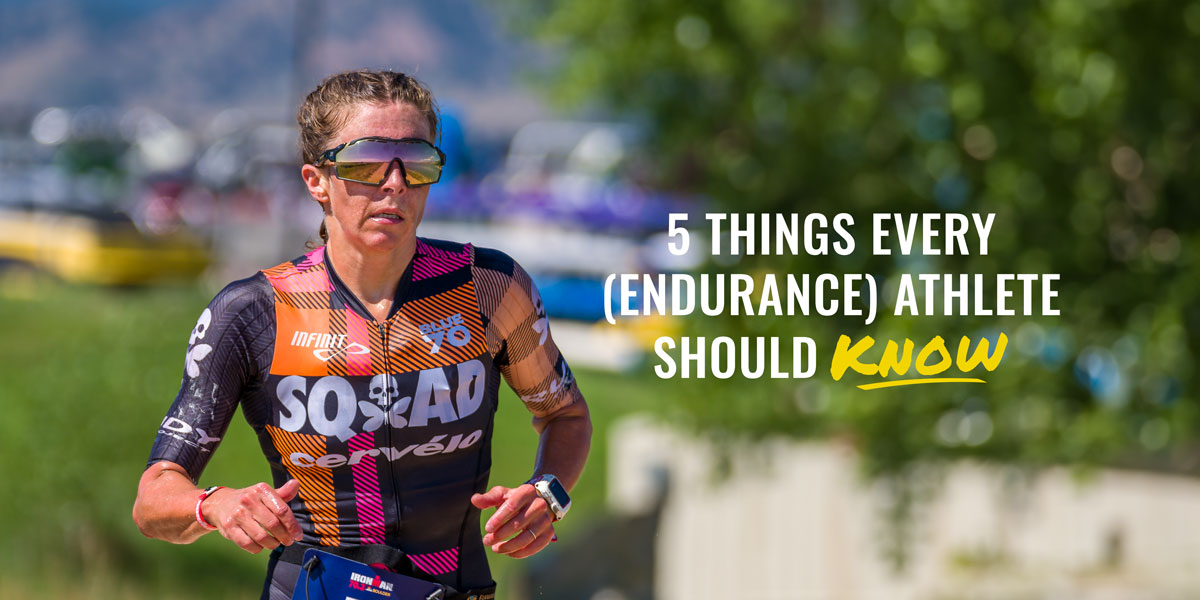
Insider tips and tricks to help you perform your best, no matter what type of activity you are doing
Colin Riley, MS, RDN, CSSD, LD - Sports Dietitian and Head Formulation Specialist at INFINIT Nutrition
Over the past 6+ years as INFINIT’s Head Formulation Specialist, I’ve talked with thousands of athletes in a wide range of sports and helped them dial in their nutrition plan for training and racing. Over this time, I have heard numerous stories about what has worked and what hasn’t.
The field of nutrition is a complicated one that always seems to be changing. Each individual is different and that’s what makes INFINIT so unique. But there are also some concepts that every athlete should know. Most of these are tried and true principles in the world of sports nutrition but we’ll talk about some updates and additions to these principles.
These are my top 5 things every athlete should know...

Author Coin Riley racing as a guide to US Paralympian Brad Synder
1. CARBOHYDRATE INTAKE RECOMMENDATIONS EVOLVED
It is well known that carbohydrates are the primary fuel source for athletes. They are the easiest macronutrient for the body to digest and convert into energy (versus protein or fat). We have an abundance of fat stores in our bodies, but the body can only convert so much fat into energy.
The harder that you are working, the more carbohydrate you are going to be burning (and the less fat you will be burning). If you’re going long enough and hard enough, there may be a benefit in consuming higher amounts of carbohydrate to avoid hitting that dreaded wall or bonking.
It has generally been recommended to consume around 60 and up to 90 grams of carbohydrates per hour for longer (3+ hour) activity.
The use of 90 grams per hour initially started being tested about a decade ago but only over the last few years has it really started to become more mainstream in the US. This research looks at using maltodextrin and/or glucose in addition to fructose in a 2:1 ratio (e.g. 60 grams of maltodextrin + 30 grams of fructose). The reason for this? The gut can only digest so much maltodextrin and glucose via the “normal” pathway. But fructose gets absorbed via a different “transporter” (think of it as a completely different door that only fructose can come through) which allows the total carbohydrate intake that can be digested to be 90 grams per hour.
Or so we thought…

That was until the last couple of years when Tour de France, Ironman triathletes, and other high performing athletes continued to push the barrier of carbohydrate intake with 100-120+ grams of carbohydrate per hour (400-500 calories) by incorporating fructose.
Just a few years ago I had people reaching out about low carb blends because they were trying some form of the trending “Keto'' diet. We never went down that path here at INFINIT as we knew carbs were the best way to fuel. From super low carb 3-4 years ago to now super high carb we’ve seen how the world of sports nutrition is always changing and evolving.
Some things are trendy, but carbs are here to stay. And we’re seeing that in the races as Ironman triathlon and Marathon Running times continue to get faster and world records continue to drop. Consuming more carbohydrate is ultimately going to mean more energy for the working muscles, but you do have to be careful as we’ll talk more about below.

There are a few important things to remember when it comes to these high carbohydrate intakes:
1. This isn’t going to be for everyone
First of all, fructose is naturally very sweet. So if you don’t like sweet tasting drinks, you may be better off sticking with a blend higher in maltodextrin with just a little bit of cane sugar (which is less sweet than fructose).
Fructose can also be hard to absorb for some people. Which can lead to GI disturbances, nausea, and bloating. Which is why we always recommend training with your race-day nutrition to avoid any unwelcome surprises.
2. Train your gut
You’ll want to make sure you train your gut during training to handle these higher levels of carbohydrates. You can’t expect to use lower carb levels in training and then all of a sudden jump up to 90+ grams on race day. Practice your race day nutrition during training (see more below!). If you’re new to higher carbohydrate intakes, my recommendation is to start with 90 grams using a combination of maltodextrin and fructose before jumping any higher.
3. High carb fueling isn't always recommended
When you’re going under 2 hours, you’re less likely to fully deplete your glycogen stores so consuming 90+ grams of carbs per hour may not be necessary. That’s not to say you don’t want to skip carbs altogether, but 30-60 grams of carbs per hour may be perfectly suitable.
The other element to consider here is overall intensity. High intensity efforts can make digestion difficult. Naturally, when the workout intensity is very high, it can be harder to digest nutrition (because you have more blood flow going to the hard-working muscles and less to the gut) which may lead to some GI issues. So if you are racing a 10k run, a sprint triathlon, or doing a 20-40k cycling time trial (think nearly all out efforts for 30-90 minutes), you will likely better tolerate a slightly lower level of carbohydrate per hour (30-60 grams vs. 90+ grams).

2. SWEAT RATE TESTING IS INVALUABLE
Sweat rate testing is one of the most underutilized performance tests and the one that can have some of the most profound effects on your performance. I’m always surprised when I’m talking with athletes who have been competing for years (even decades) and have never done a sweat rate test and therefore have no idea how much they sweat. Sure, they are a “heavy sweater” but don’t really know what that means.
You can perform a sweat rate test at home as long as you have a scale to weigh yourself. The purpose of the sweat rate test is to see how much you are sweating on an hourly basis so that you know how much you need to drink to minimize the effects of dehydration. It is generally recommended to minimize dehydration to about 2% of your body weight. For a 150 pound individual, this is 3 pounds.
You can get all of the information you need about performing an at-home sweat rate test here. It’s important to remember that you want to perform multiple sweat rate tests in various conditions so you know how it varies in colder vs. warmer temperatures and then you can utilize that information on race day to have a personalized hydration plan.
If you’re looking to take your sweat rate test analysis to the next level, I would recommend the Nix Biosensor, which not only tells you how much you are sweating but also the total electrolyte that you are losing. I did some comparison testing of the two methods, and the Nix test was quite accurate — My Nix results were 91% accurate and within 2.4 oz/hr of my weigh in test.

3. PRACTICE MAKES PERFECT
It always surprises me when I am talking to someone who is only a few weeks away from their “A” race and they are just now figuring out their nutrition plan for race day. There are a number of reasons why this is less than optimal:
1. Dialed in for Race Day = No Surprises on Race Day
When you dial in your nutrition EARLY, you will have ample opportunity to train with that nutrition. You will figure out what is working and what isn’t, and if anything needs to be changed. If you wait till 4 weeks out and your last big workout before your race, you won’t have much time to adjust and re-test before race day.
By using in training what you are going to on race day, there will be no surprises come the big day. This gives you confidence and peace of mind. You’ll have one less thing to worry about race week/race day as you’ve successfully executed your nutrition plan many times at that point.

2. Training Your Gut
As we talked about earlier, it’s important to train your gut to make sure you can tolerate the nutrition you plan to take. This is especially true when it comes to the high carbohydrate intakes of 90+ grams per hour.
Other factors that make digestion more difficult include the heat. In hot and humid conditions, your body will prioritize blood flow to your skin for cooling, and less for the GI tract for digestion. So it is important to remember that if you are planning on racing in a hot environment, you’ll want to try and mimic that in training to ensure you can handle your nutrition plan. Otherwise, be prepared to potentially dial things back slightly on race day so you don’t overload your gut with more than it can handle.

3. Fuel Your Training to Maximize Results
When you are using your nutrition during training, you are likely going to get more out of your workouts. If you’re getting “more” out of your workouts, that means your fitness is building at a faster rate compared to if you were doing that same workout without nutrition.
Let’s think about a hard 90 minute effort as an example (bike, run, soccer practice, you name it). If you’re doing that workout with no nutrition, you’re likely going to start getting dehydrated and depleted. Your effort over the final 10-20+ minutes is going to drop so the overall quality of that workout is now lower than if you were actually fueling.
Not only that, your body is totally depleted after a hard 90+ minute workout/practice and it’s going to take you longer to recover which means you might go into your next training session still depleted. You can see how this can turn into a continual cycle of underperforming key workouts coupled with longer recovery times.
Speaking of recovery…

4. PRIORITIZE THE R’s OF RECOVERY
You may have heard about the 3 R’s of Recovery: Rehydrate, Repair, and Replenish. These are tried and true principles when it comes to post-workout recovery nutrition.
But recently, the dietitians at the US Olympic Training Centers, have started talking about a 4th R: Reinforce.
Reinforce is all about getting quality antioxidants and phytochemicals along with vitamins and minerals from foods like fruits, vegetables, whole grains, fish, nuts, and olive oil. These types of foods benefit the immune system, central nervous system, and of course, the muscles to promote recovery and to keep the body healthy.
When it comes to recovery nutrition, one of the more important things to remember is you want to focus on these elements of recovery as quickly as possible after your workout — normally 30-60 minutes after your workout is the best time to get that recovery process started.
Let’s take a look at each of the “R’s” of recovery + we’re even going to add on a bonus 5th R to think about...

1. Rehydrate
As we talked about earlier, we want to stay on top of our fluid intake and try to minimize overall dehydration to about 2% of our body weight. Under hot conditions and/or when going long distances, sometimes that number creeps up to 3-5+ percent which means our body is moderately dehydrated. So it’s safe to say that after most workouts, you will be at least mildly to moderately dehydrated unless you are drinking 100% of your fluid loss (which isn’t recommended).
It is typically recommended to consume 16-24 ounces of fluid per pound of body weight lost to ensure full rehydration after workouts/races. The only way to truly know this would be to do a weigh in before and after each workout, which some athletes do to really dial in their hydration plans for both during as well as their recovery hydration.

2. Repair
When it comes to the 2nd “R” of Repair, we are focusing on protein intake and muscle repair. By getting a quality protein source in after workouts, the body will have what it needs to help repair any muscle damage that may have occurred during the workout.
Some workouts are naturally more damaging than others. Lower impact activities like swimming and biking may not result in substantial muscle damage while other activities like running and strength training, will typically lead to more muscle damage. Though if you’re going long distances in any sport, there’s a chance that your body does start to break down some muscle. So in general, it is a good rule of thumb to get 15-30 grams of protein after workouts to promote muscle recovery and repair.

3. Replenish
Replenishing is all about refueling the muscles with carbohydrates. As we talked about earlier, carbohydrates are the preferred fuel source for the body during activity. It’s recommended to take in carbohydrates to help replenish glycogen stores in the muscles and liver, especially after longer and/or harder sessions, This will ensure you are recovering quickly and ready to go for your next training session. This is especially important when you are training more than once a day or have less than 24 hours until your next training session.
You’ll typically want to target consuming 30-60 grams of carbohydrates after longer and/or intense training sessions to get that recovery process started and then follow that up with a normal meal another 1-2 hours later.

4. Reinforce
As we briefly talked about above, Reinforce is the newest “R” and the focus here is making sure adequate fruits, vegetables, whole grains, and healthy fats are consumed throughout the day. This will help ensure important vitamins, minerals, antioxidants, and phytochemicals are being consumed to aid in tissue repair and to help keep the immune system strong so you can stay healthy and avoid getting sick.
After all, the more consistent your training is without interruptions for things like sickness, the more fitness you will build. So aim for a wide variety of fruits and vegetables (try and get lots of different colors throughout the day and week) and healthy fats like flax seed, fish, and olive oil.
If your diet is lacking fruits, veggies, and/or healthy fats, consider adding INFINIT’s newest “boosts” including our Greens and Berries to your custom protein blend as well as ground flaxseed for some healthy omega-3 fats. These can be an easy way to boost your daily fruit and veggie intake.

5. Rest (bonus)
Although not specifically nutrition related, it is always important to remember that a good night's sleep (7-8+ hours) can have a big impact on overall recovery and keeping the body healthy. Especially during high volume and/or intense training times, sleep is essential in keeping the body healthy.
Think about that time when you got really sick and had to take a few days (or more) off of training. By focusing on the 5 R’s of recovery, you can help make sure you are recovering quickly after workouts. This is going to help keep your body healthy and reduce your risk of getting sick, helping to keep your training on track.

5. CAFFEINE: A BENEFIT FOR MOST ATHLETES
Caffeine is widely consumed around the world from coffee and tea to soda and energy drinks. It is also found in a wide range of sports nutrition products. Caffeine has generally been considered an ergogenic aid or something that improves performance.
Most studies show about a 3% improvement in performance. It helps improve focus and reduces your perceived effort of exertion (so the effort doesn’t feel as hard) which potentially helps you push just a little bit harder. During very long ultra endurance events (e.g. 100 mile run race), caffeine can even be used as a stimulant to help keep you awake.
But here’s the catch, some emerging research in the field of genetics has shown that some individuals who are classified as slow metabolizers, may not get a benefit from caffeine, and even worse, caffeine may have a detrimental effect on their performance (1).
Caffeine takes about 45-60 minutes to peak in your body so depending on how long your event is, you want to time caffeine correctly.

For a short event like a single event at a swim meet or track meet, you want to really dial in that timing so it is peaking right at the time of the event.
For longer endurance events, you can take some caffeine before but then can continue to take in additional caffeine throughout the event. Either by consuming it consistently through the event or by saving it as a tool for the later stages of the event, depending on your personal preference and how long the event is.
The recommended amount of caffeine to take in for performance ranges anywhere from 1-5 mg/kg of body weight (take your weight in pounds and divide by 2.2 to get your weight in kilograms (kg). So as an example, a 150 pound athlete would want to take 68 - 340 mg of caffeine before/during their event.
Remember that caffeine does linger around in your body longer than it takes for it to get in (about half of the amount you consume is still in your body 3-4 hours later). So if you had a 100 mg caffeine cup of coffee at 5 am, you would still have about 50 mg of that cup of coffee in your body around 8-9 am.
It’s important to remember your overall tolerance level for caffeine and make sure you don’t overconsume it which can leave you feeling jittery. In addition, caffeine may exacerbate the effects of heat, so if you are competing in the heat, you may want to be extra careful about how much caffeine you take.

In early 2024, INFINIT Nutrition launched INFINIT Performance Labs which features a number of tools to help you perform your best. The Nix Biosensor can measure your sweat rate and electrolyte loss so you can more accurately know how much fluid and electrolyte you should be consuming. If you’re looking to take a deep dive into your sweat rate and fueling plan, INFINIT has launched Personal Nutrition Coaching packages that will utilize either traditional sweat rate testing protocols and/or Nix Biosensor testing and allow you to work one-on-one with a Certified Sports Dietitian.
As the science evolves, so does INFINIT. We are excited for what the future will hold, and what information may come from new developments in genetic testing which may provide insights on things like caffeine metabolism which will help us further dial in your training and race day nutrition strategy.
Over the years of practicing as a sports dietitian, these 5 things have really stood out as having the biggest potential impact on your overall performance when executed correctly. It can be difficult to make a lot of changes all at once, so consider picking one or two of these and start experimenting and implementing them into your training today. I have no doubt that if you do, you will go into your next race or competition more prepared and ready to succeed.
About the Author
Colin is INFINIT Nutrition’s head formulation specialist, a Registered Dietitian/Nutritionist and Certified Specialist in Sports Dietetics (CSSD) with a Master’s Degree in Sports Nutrition, a USA Triathlon Level 1 Coach, and Boston Marathon qualifier. Colin has competed in sports all his life and has been competing in triathlons and running races since 2005 with experience racing as a professional triathlete and a triathlon guide for visually impaired/blind athletes.
References
Guest, N. et al. “Caffeine, CYP1A2 Genotype, and Endurance Performance in Athletes”


